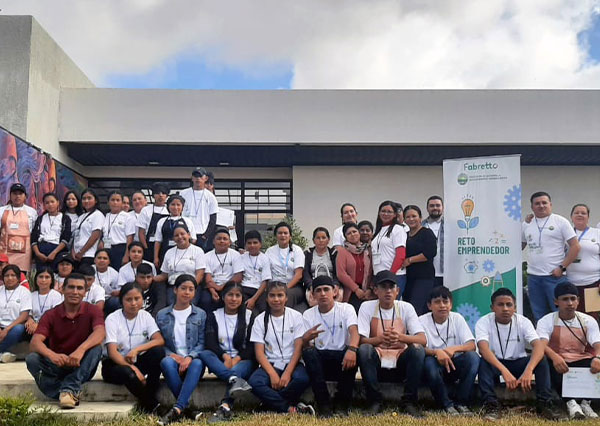In late 2022, we trained an initial group of teachers from La Paz, Honduras, and in 2023, Fabretto’s team trained 60 rural secondary education teachers in two departments of Honduras, Comayagua, and Yoro, in technology integration strategies. Additionally, Fabretto has invested in hardware kits of laptops, tablets, and servers to enable offline learning in these rural schools. These teachers reach over 1,200 youth in the innovative Sistema de Aprendizaje Tutorial (SAT) program, which brings access to secondary education to rural communities.}It has been guaranteed that 93% of children and adolescents can have the opportunity to continue their studies and broaden their knowledge in all aspects.
Here’s what makes our approach fit the needs of the most rural schools in Central America:
1. Offline first. In a low- or no-connectivity context, we prioritize an offline first approach to technology integration – we assume that schools will not have internet access, and ensure that the equipment, apps, and strategies we use are designed to facilitate learning and interaction with digital contents offline.
2. Open content, curated for rural schools. An incredible variety of free digital content is available on the internet, and we believe that rural teachers and students can leverage internationally-recognized resources – like Khan Academy, for example – to improve learning. The process of curating and intentionally sharing high quality content is essential to enabling teachers to take advantage of digital resources in their classrooms.
3. Ongoing training and coaching. Rural teachers need more than just one workshop to put technology integration into practice. Fabretto offers a series of in-person and virtual workshops to teachers, paired with ongoing virtual and in situ accompaniment of the tech integration process.
4. On-the-job learning. The best way for teachers to learn is “on the job” – in the classroom, learning alongside their students, and putting into practice technology integration strategies in their classrooms. Through model classes and hands-on learning, we help teachers feel confident integrating tech in their classrooms.
Are you interested in supporting this project? Please donate to our Global Giving campaign here.







